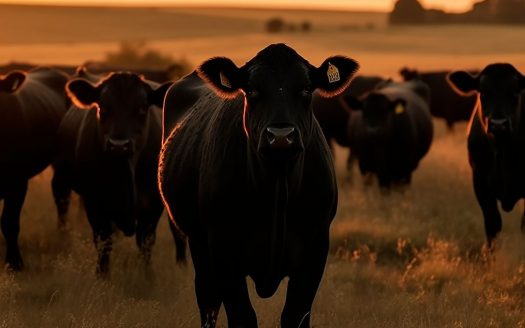The Future Of Ranching: Predictions and Trends In The Industry | United Country Real Estate
The Future of Ranching: Predictions and Trends in the Industry
Ranches have been a large part of the American landscape for centuries. How has the ranching industry changed over time and how will it continue to evolve in the future?
Ranching is an age-old practice that has adapted and flourished throughout generations, changing with modern advances in technology, societal trends, and climate change.
Today’s ranchers now need to embrace digital data management in order to stay competitive, expand their operations, and produce top-quality beef.
In this article, we explore current and emerging trends in ranching and make predictions about the future of ranching as an industry. We cover topics such as digital transformation initiatives, managed-grazing systems, increased transparency into animal welfare practices, and more.
We’ll also discuss how these changes are impacting the industry today and what they could mean for ranchers down the line.
Five Areas of Interest in the Ranching Industry
The ranching industry is an ever-evolving landscape that is heavily influenced by numerous factors. With the world population surging and climate change becoming an inevitable reality, certain areas of interest have grown increasingly important over the last few decades.
We look at five areas of importance to the ranching industry – rural land, world population dynamics, climate change, the role of government, and beef production – and how a 20-year time lapse might shape the understanding of each area moving forward.
-
Rural Land
When it comes to ranching land currently has a significant impact on the industry.
Rural land is typically used for grazing animals and cultivation which leads to higher independent yields for ranchers who own rural property.
While cattle are still favored by most ranchers when it comes to selling products on a large scale, rural properties also offer diversity in terms of crop variety where hogs, sheep, and other products can be sold.
In twenty years there will likely be more competition for rural land as prices continue to increase due to growth in housing demand or farmland conversion into residential development projects. There could also be changes due to public policies such as those related to resource conservation or augmentation plans that could affect ownership rights or access to private lands.
-
World Population Dynamics
As the world population continues to surge, adding pressure on existing resources it’s necessary for ranch operators to consider how their product fits into global markets and expand sales opportunities with new customers in various countries around the globe.
It’s been estimated that by 2040 approximately 9 billion people would inhabit the earth necessitating increased food production In reflection this could potentially stimulate rising demands for leisure activities such as hunting camping and recreational fishing which may lead to a financial opportunity from participation fees granting access to exclusively protected lands of different regions.
-
Climate Change
Climate change has become an undeniable reality affecting all areas of life both personally and professionally in whatever way shape or form slowly but surely every single industry including agriculture production and ranching.
Climate change affects in a variety of environmental ways such as radical weather patterns decreasing water supply eroding soils rising temperatures resulting in habitat alterations ultimately impacting food productivity and requiring adaptation strategies to accommodate changing ecosystems.
Looking into the next two decades potential further weather extremes make it especially difficult for these sectors to replenish lost resources thus necessitating even a proactive approach to predicting forecast climate changes in order to prepare long-lasting sustainable solutions
-
The Role of Government
The role of government in the ranching industry is an area of great importance. The current situation related to the ranching industry is that government regulations and policies play a major role in the success and failure of ranching operations.
Government programs provide financial assistance to ranchers, as well as set land-use parameters and pasture connectivity policies. In addition, government enforcement efforts are extremely important for animal health (e.g. disease prevention) and public safety (e.g. wolf control).
If these trends continue for another 20 years, it is likely that there will be more regulations imposed on ranchers, as well as continued aid from the government in various ways. It’s essential that ranchers understand how their actions may affect other lands around them because any violation of laws could end up costing them or their businesses significantly if they are not careful.
-
Beef Production
Beef production is an important area of focus for the ranching industry. Currently, technological advances and new production strategies have enabled producers to achieve greater efficiency while maintaining high standards and quality.
In the next 20 years, ranching and beef production will be shaped by further advancements in technology as well as improvements in animal nutrition, biosecurity measures, sustainability practices, and global market dynamics.
With these factors at play, the beef industry will evolve significantly while continuing to provide safe, healthy beef products that maintain a high standard of excellence.
Going Forward With Other Trends to Consider in Ranching
Ranching is an essential component of the agricultural industry, and yet it is constantly changing to meet the demands of a rapidly evolving world.
As ranchers face increasing pressures from economic volatility and other circumstances brought about by political, social and environmental change, there are some new trends that should be considered for successfully running a ranch.
The trends associated with ranching going forward include:
Land Prices
Incentives such as conservation easements can help protect some acres; however, there’s no denying that land prices in many areas have increased significantly over recent years.
These rising expenses must be taken into account when planning for future operations.
Other Input Costs
The cost of inputs such as feed is also high and on the rise particularly due to their shipping costs from other countries or states. Finding ways to reduce these expenses while still retaining quality results may involve looking at alternative sourcing methods of managing costs more carefully.
Technological advances make certain inputs easier to obtain thus reducing the effort expended in procuring them in comparison with traditional methods.
Technology
Technology has forever changed how ranches operate in 2020 and beyond. From automated equipment used to measure feed allotments to tracking systems used in livestock management – tech advancements provide better efficiency than ever before.
On top of that certain activities such as marketing communications, and logistics dissemination all are made much easier due to having access to effective digital communication tools saving time, effort, energy, and money.
Societal/Political Change
It is becoming increasingly common for state and local governments to pass regulations that affect how ranchers operate and how animals are treated. Checking with local industry groups can help ranchers stay informed of new laws that could impact their bottom line.
Considering cultural nuances when dealing with international guests may also be important; understanding what values are shared across different cultures which must be respected can help foster positive relationships between organizations and their customers.
Diversity of Products and Services
Today’s trends in ranching involve considering many different products, services, and strategies that allow individual ranchers to make the most of their available resources.
Instead of relying solely on traditional methods such as raising livestock, ranchers can explore strategies like agritourism, selling value-added products, or providing educational opportunities.
In addition to keeping up with changes in the agricultural industry or government regulations, it is important for ranchers to stay aware of what types of products and services are in demand by consumers and tourists who may be keen on buying local products.
By diversifying their operations in this way, ranchers can create sustainable income streams that will benefit them well into the future.
To Own or Not to Own a Ranch
With the advancing trends in ranching, one of the most important questions to consider is whether or not to own a ranch. Owning a ranch can provide numerous money-making opportunities and allow for personal independence.
However, owning a ranch is costly and requires many resources. Furthermore, in order to make a profit from owning a ranch, proper management and understanding of current trends in the sector must be kept track of and implemented carefully.
Before committing to owning a ranch it should be taken into account if one truly has the proper knowledge, skills, and resources required for successful management.




